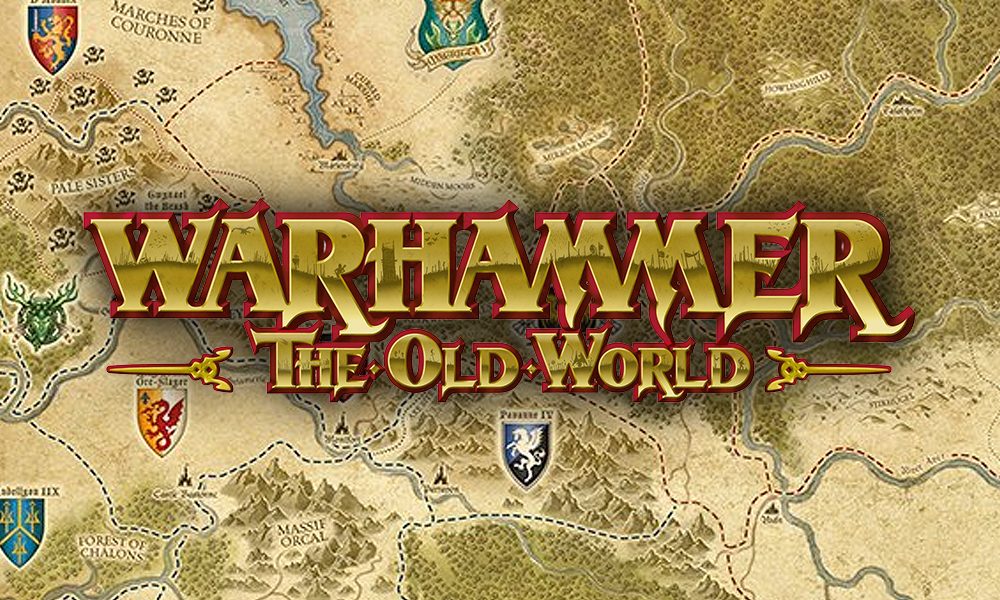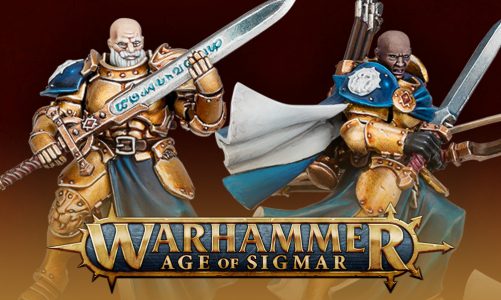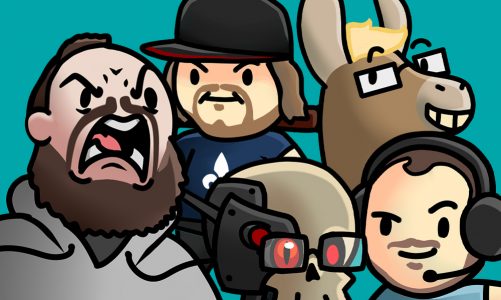The Future is Back to the Past
Back in November 2019, Games Workshop’s Warhammer Community team posted an article titled Old World? New Warhammer!! which announced their return to what’s now referred to as the World That Was in a new game called Warhammer: The Old World.
Since then, there’s been no end to the rampant speculation about various unknown elements of the game. What shape will the bases be? What scale will it be? But – one thing that’s become clear is that the timeline of the game will be set during a period of the Old World’s history known as the Time of Three Emperors, and this is a term that’s been bounced around forums, social media, and is now even the setting for a (hopefully) upcoming fan film set in the Old World. But what is it? Who are these emperors? It’s hard to get excited about something if you don’t know what it is! So, I thought I’d give a bit of a nuts-and-bolts explanation of what it means, and hopefully get you excited for the new game (whatever it turns out to be!).
Ellemeno
In the Imperial timeline, the Time of Three Emperors (and the Dark Ages that followed it) are very much “the middle bit” before things settle down and go back to normal. The part of the alphabet song that makes some kids think there’s a letter called “ellemeno”. For several hundred years, a lot is going on in lots of different places to many kinds of people all at once, which is fertile ground for some fantastic narrative gaming and a wonderful opportunity for creating custom armies.
Here’s the “short” version:
After a bit of a power vacuum, Wilhelm, Grand Duke of Stirland was elected Emperor (that’s 1 Emperor). He was a devout follower of Sigmar (y’know, Sigmar), and the favourite candidate of the Grand Theogonist (the Sigmarite Pope).
Separately, a very clever, very ambitious Countess by the name of Ottilia of Talabecland also very much fancied the title for herself. Her first move was to travel to Middenheim and speak with the Ar-Ulric, the high priest of the church of Ulric (god of warriors, winter, and wolves). Ulrican worship predates the worship of Sigmar by millennia, and Sigmar himself worshipped Ulric when he was still a man. So, naturally, you can imagine just how resentful the Ulricans are about the Sigmarites throwing their weight around to begin with.
Ottilia told him a very creative, and very convenient story about how certain Sigmarite doctrines were wrong, and therefore Emperors crowned in his name were illegitimate. (Handy, that!) She crowned herself Empress within a year, with the backing of the Ulricans and other non-Sigmarites (that’s 2 Emperors). After that, she began making life very hard for Sigmarites, and ended up causing and fighting a war (which, as it turns out, she was very good at).
The civil war between these factions went on for 200 years with the descendants of each faction claiming to be Emperor until one day, Count Sigfried of Middenland decided he wanted to be Emperor too. Luckily for him, this ambition happened to coincide with a very Mean Girls style falling-out between the Ar-Ulric of the time and the descendant of Empress Ottilia. So, the Ar-Ulric agreed that Sigfried could sit at his lunch table and wear pink on Wednesdays, and he’d support his claim for Emperor.
The Elector Counts weren’t at all pleased with this arrangement (“he doesn’t even go here!?”), and refused to elect Sigfried. With dignity and poise, Siegfried stomped off in a tantrum back home to Middenland and declared himself Emperor anyway (that’s 3! 3 Emperors! ah-ah-ahhh!)
Also, Some Big Stuff Happened
While the internecine political and religious wars were being fought both with courtly intrigue and on battlefields across the Empire, all the nasty stuff out there in the world was just as out there, and just as nasty. Seeing fragmentation and weakness, humanity’s enemies sought to exploit the situation for themselves.
Near the beginning of all this, Gorthor the Beastlord waited until the Empire’s finest were off winning glory in foreign lands and led an assault on the states of Hochland and Ostland.
One of the biggest, baddest, ‘ardest orcs wot eva lived, Gorbad Ironclaw, invaded the Empire, sacked one of its finest cities, all but destroyed The Moot (that’s where halflings live. He killed the hobbits!!!), and completely wiped the state of Solland from the map. In destroying Solland, he took the Elector Count’s Runefang (one of the most powerful magical weapons ever forged by mortals) and, rather than use it, nailed it to his shield for a bit of extra bling!
While the world was recovering from that, a charismatic fellow by the name of Vlad von Carstein became the Count of Sylvania. Spoiler alert: that doesn’t turn out too well later on.
After all that,The “Great Enchanter” Constant Drachenfels holds a lovely dinner party attended by the Emperor and most of his court… and poisons them to death; thus completely destabilizing what little political order had been achieved.
The Aftermath – Warhammer: The Old World
For about another 200 years after all that, there was a total lack of stable governance. The grand city of Mordheim is hit by a meteor made of warpstone and turned into a ruined, demonic hellscape. The Von Carsteins (remember charismatic Vlad?) surge to power and lay waste to vast swathes of the Empire and establish a vampiric tyranny. And Drachenfels (remember him? Masterchef?) opens a portal in his mountain stronghold through which pours wave after wave of daemons.

That – is where we find ourselves at the time of Warhammer: The Old World. Note: this is based on the updated artwork showing the lands of Bretonnia, and the clear mention of who was the king at the time (Louen Orcslayer).
I hope (if you’ve made it this far!) that you agree with me that between all these big, sweeping events and multitudinous little scuffles between factions; there’s massive scope for the inclusion of new stories, new units (with accompanying models), and a really good opportunity to bring people back to the blood-soaked, muddy battlefields of the Old World after spending a few years flying around in the stars.
Images:
- Warhammer: The Old World logo – credit GW https://www.warhammer-community.com/2019/11/15/old-world-new-warhammer/
- Ottilia I – from The Empire at War (GW)
- His Fightiness, Gorbad Ironclaw – GW
- Section of Bretonnia map from Warhammer: The Old World – credit GW https://www.warhammer-community.com/2020/12/28/the-old-world-your-first-look-at-the-map-of-bretonnia/




